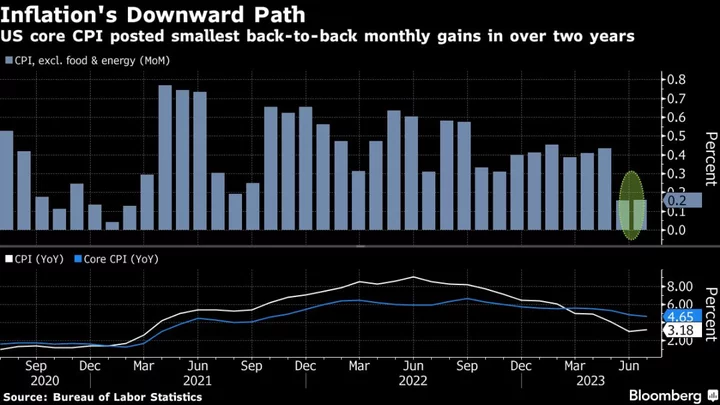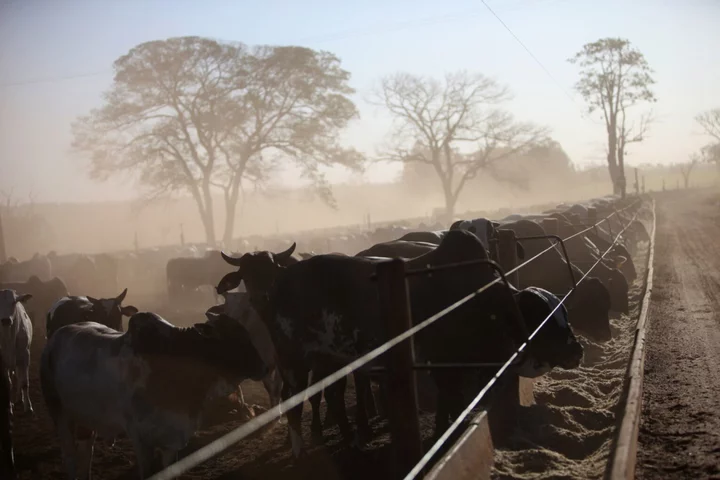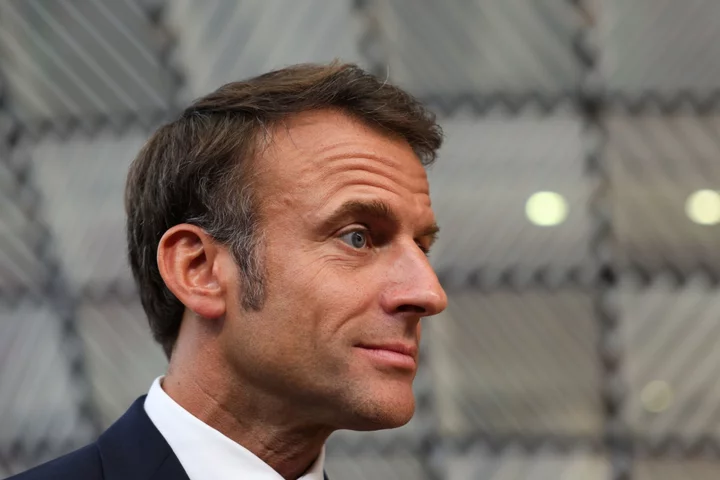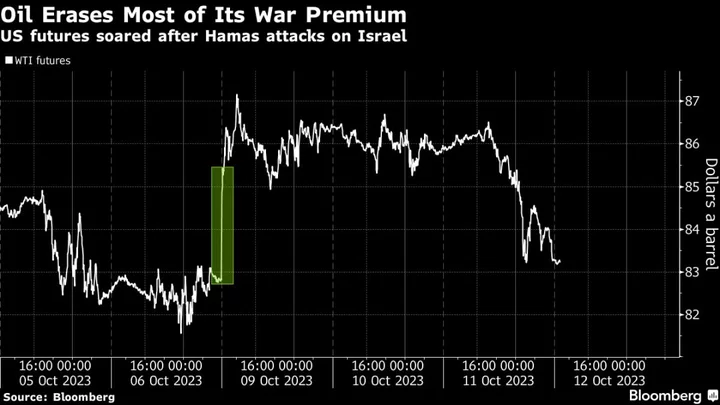An increasing number of economists — including the Federal Reserve’s own staff — are predicting the US will escape a recession, though it’ll be well into 2024 before anyone can be sure of it.
Fed Chair Jerome Powell says he expects the central bank to navigate a path where the US economy expands with inflation rates falling back to the 2% target, though the task will be challenging.
On one side, a failure to act aggressively enough against price pressures could result in rebounding inflation that requires harsher moves later. There’s also the risk that the lagged effects of what’s already the most aggressive tightening in four decades could tip the economy into recession.
“Unfortunately, I don’t think the picture on any of this will be clear for at least two quarters, though the fact that inflation has come down has bought the Fed some time, for now,” said Jonathan Millar, a senior economist at Barclays Capital Inc. “The Fed seems to be well ahead of markets in recognizing that the path to a soft landing is far from assured.”
The National Bureau of Economic Research’s business cycle committee, the official arbiter of US downturns, defines a recession as a significant decline in economic activity spread across the economy that lasts more than a few months. It can take as long as 21 months to declare such an event, once the group processes what can be initially mixed reports and data revisions.
While there’s no formal definition of a soft landing, most economists see it as the moderation of inflation without a recession or serious harm to the labor market.
Read more: Why Economists See Signs of ‘Soft Landing’ for US: QuickTake
The path isn’t easy: A study by former Fed Vice Chair Alan Blinder of 11 monetary policy tightenings from 1965 to 2022 found that four resulted in something approximating that successful outcome with stable or lower inflation, the rest in hard landings and or a reacceleration in inflation two years later.
“There are risks on both sides,” said Richard Clarida, who served as vice chair from 2018 to 2022 and is now global economic advisor at Pacific Investment Management Co. “I think we’re going to have a pretty good sense of this by next spring.”
What Bloomberg Economics Says...
“On recession, a lot of indicators point to July 2022 as possibly the cyclical peak. The outstanding indicator that doesn’t is payrolls — and lots of murmurs there on large downward revisions which have the potential to actually turn nonfarm payroll numbers into negative territory in the past few months. But we won’t know until next year for ‘real’ 2022 figures, and we will only know in 2025 what the ‘real’ 2023 figures look like.”
— Anna Wong, economist
Fed officials are looking over an even longer period. The Federal Open Market Committee, the central bank’s policy-setting group, is forecasting inflation hitting its 2% target likely soon after 2025. But the contours of a moderate economy with stable prices would be pretty clear in the incoming data by later next year or the following if the projections prove prescient.
Because engineering such an outcome is time consuming, the committee is estimating interest rates will be higher for longer. They’re anticipating a rate at 4.6% at the end of next year, which is two points higher than the long-term trend and about a half-point higher than what markets are expecting.
The Fed raised rates last month to a range between 5.25% and 5.5%, the highest in two decades, and has signaled they may hike again this year.
Recent economic data has exceeded economists’ projections, with the 3.5% unemployment rate among the lowest in decades, while a key measure of underlying inflation in July posted the smallest back-to-back increases in more than two years. While that’s supportive of a soft landing, it doesn’t necessarily rule out more overheating that leads to another leg of higher prices.
“I don’t think you can know whether there’s a soft landing without the benefit of hindsight,” said Neil Dutta, head of economics at Renaissance Macro Research LLC, who sees a potential “inflationary boom” as oil prices are climbing and high home prices could feed into rents.
His concern has been echoed by policymakers who are keen to avoid repeating the mistake of the 1970s, when the Fed prematurely let up on its efforts to contain inflation, only to see price increases re-accelerate to double-digit levels later.
“The worst outcome for everyone, of course, would be not to deal with inflation now, not get it done,” Powell said in July.
Because economic data often looks mixed at turning points and is later revised, and it’s not too unusual to have a quarter of negative growth during a long expansion, it will be impossible to determine whether the Fed has succeeded in real time.
After all, the US experienced two consecutive quarters of contraction in the first half of 2022 — what typically constitutes a recession in other economies.
History provides a similar guide. Six months into what was later defined as the 2007-2009 recession, FOMC participants were predicting moderate growth in 2008. Then-Chair Ben Bernanke initially dismissed concerns about the subprime mortgages’ broader effect on the economy.
“In most cycles, even at a turning point, we’re not really sure,” said Julia Coronado, president of MacroPolicy Perspectives LLC and a former Fed economist, who worries about the Fed overdoing rate hikes. “Let’s have some patience. The only hope for a soft landing is that they stick to that patience.”









